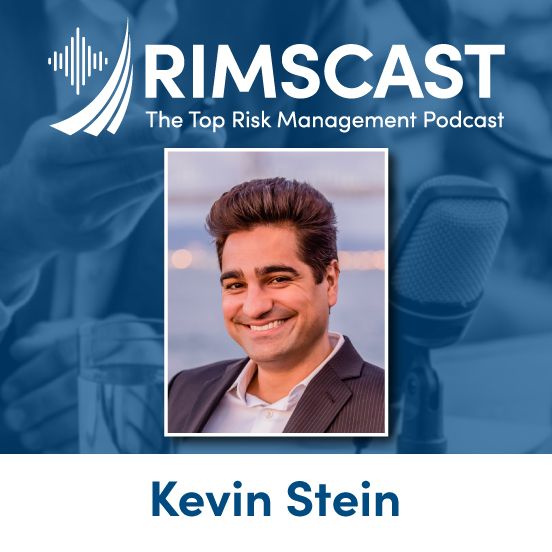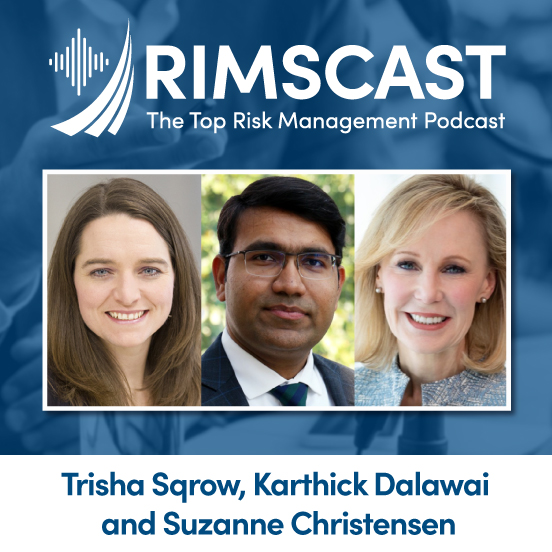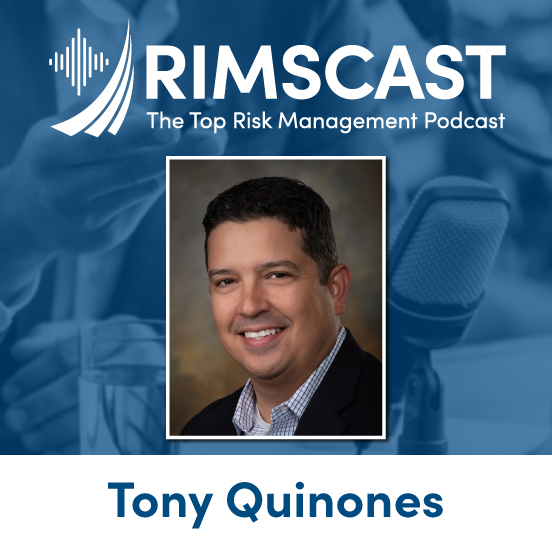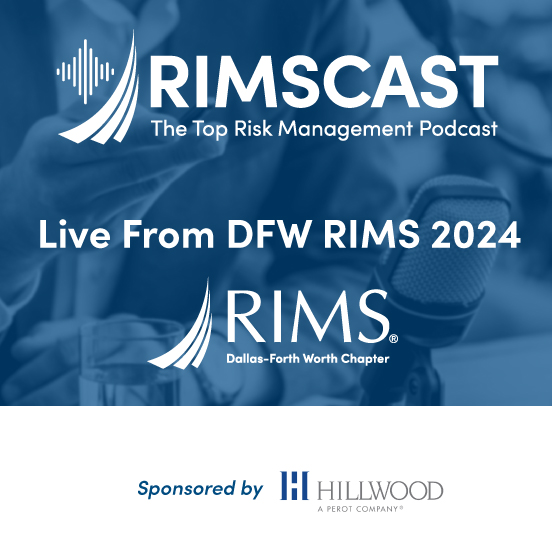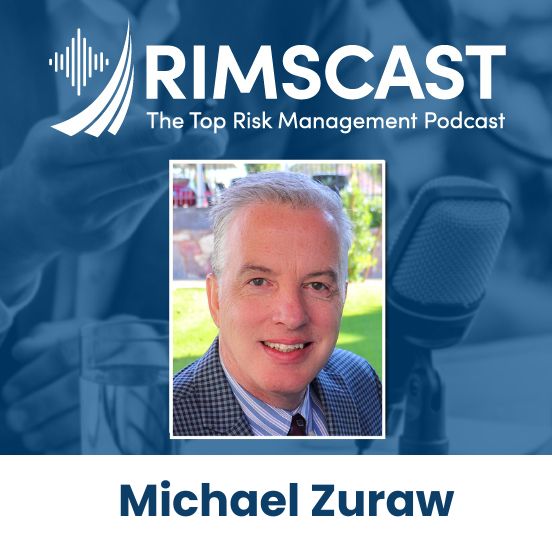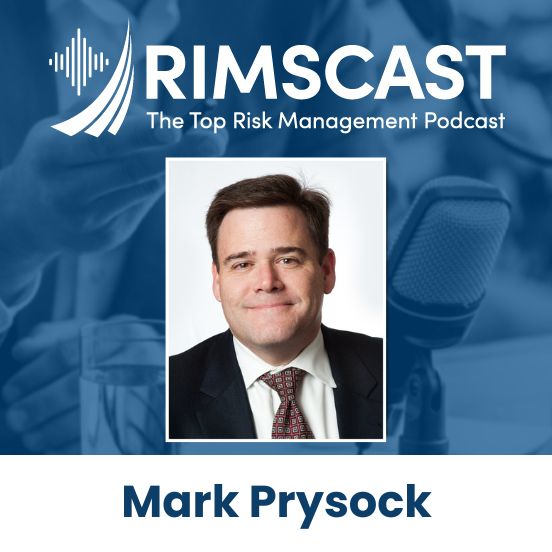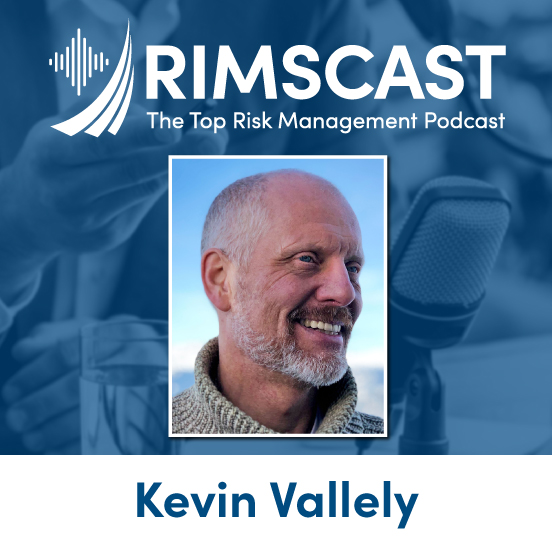Wildfire Risks with Kevin Stein
Description
Welcome to RIMScast. Your host is Justin Smulison, Business Content Manager at RIMS, the Risk and Insurance Management Society.
In this episode, Justin interviews Kevin Stein, the CEO of Delos Insurance Solutions. Kevin tells of his aerospace engineering background and how modeling led him to the insurance space. He speaks of his passion for insurance, and of co-founding Delos Insurance Solutions to fill the commercial coverage gap around California Wildfires. Kevin speaks of his optimism for the future of Wildfire control with property fire-hardening principles and new detection and deterrent technology.
Listen in for advice on hardening commercial properties against wildfire risk, and how to secure coverage against this risk.
Key Takeaways:
[:01] About RIMS.
[:15] About this episode. From RIMS headquarters in New York, our guest today is Kevin Stein, the CEO of Delos Insurance and we will discuss wildfire risk.
[:39] The next RIMS-CRMP Exam Prep will be held with Purima virtually on November 14th and 15th. The next RIMS-CRMP-FED Exam Course will be hosted along with George Mason University from December 3rd through the 5th.
[:58] Links to these courses can be found on the Certifications page of RIMS.org and through this episode’s show notes.
[1:05 ] RIMS Virtual Workshops! “Risk Appetite Management” is back by popular demand. Registration closes November 19th for the session on November 20th and 21st. That session will be led by Ken Baker.
[1:20 ] Elise Farnham of Illumine Consulting recently joined us here on RIMScast. On December 4th and 5th, she will host “Applying and Integrating ERM”. On December 17th and 18th, she will host “Captives as an Alternate Risk Financing Technique”.
[1:37 ] Those are just three of the workshops RIMS offers; we have lots more! Other dates for the Fall and Winter are available on the Virtual Workshops calendar, RIMS.org/virtualworkshops.
[1:49 ] This is the last call to register for the RIMS ERM Conference 2024 which will be held on November 18‒19, 2024 in Boston, Massachusetts. The agenda is live, we’ve got a great keynote, and we’ve got so many fantastic educational sessions and networking opportunities for you!
[2:07 ] So visit the Events page of RIMS.org and register today! A link is also in this episode’s show notes.
[2:14 ] Interview! Climate change and wildfire risks are on our minds here at RIMScast! My take is that there is no longer a wildfire season here in the U.S., it’s just wildfire year. Let’s see if our guest agrees with me, and what risk managers can do to combat and mitigate this problem.
[2:39 ] My guest is Kevin Stein. He is the CEO of Delos Insurance Solutions and he is an aerospace engineer by training. We're going to get a fascinating perspective from him on wildfire risks and what risk professionals can do to limit their exposure.
[2:56 ] We’re also going to talk about the trends driving wildfire reduction techniques. Let’s get to it! Kevin Stein, welcome to RIMScast!
[3:21 ] Kevin and a Co-founder started Delos Insurance Solutions in 2017. It is a specialty MGA. They sell policies across California in areas that other insurers have vacated because of perceived wildfire exposure in those regions.
[3:40 ] Delos Insurance Solutions is in partnership with an environment think tank made up of 100 professors, post-doc scientists, and the top wildfire researchers in the world.
[99] They have co-developed the civil government models for agencies including CalFire, the Public Utilities Commission, and the U.S. Forestry Service, for 25 years.
[4:04 ] With the think tank, Delos Insurance Solutions has developed more sophisticated wildfire underwriting internal tools and models that give a sense of a per-risk view of wildfire exposure as well as a portfolio-level view of wildfire exposure.
[4:19 ] With that, Delos Insurance Solutions has developed a number of programs. They sell home insurance, landlord’s insurance, and vacant home insurance across California.
[4:33 ] Kevin tells about his experience as an aerospace engineer. He did his Master’s in Aerospace Engineering at Stanford. He started on the modeling side and found his way into insurance.
[4:56 ] Kevin finds insurance fascinating. He says that everybody in the industry understands how interesting insurance is and everybody outside the insurance industry does not. Having gone from outside the industry to inside it, Kevin says the people in the industry are correct.
[5:13 ] Kevin says there are many different, interesting aspects of insurance and his career has been a wild ride.
[5:40 ] Kevin says the reality of wildfire season is that wildfires can happen at any time. There need to be specific conditions for these fires to become large, destructive wildfires. Conditions need to be hot, dry, and windy and there needs to be fuel.
[6:01 ] The seasons have been changing. In California, the wildfire seasons in 2017 and 2018 were very destructive. Historically, Northern California has a rainy season from mid-October through late March or early April. In 2017 they had sun through the end of December and rain until June.
[6:43 ] During the Fall, Northern California has a lake effect of winds coming over the mountains out to the ocean, and it’s usually stormy. In 2017 and 2018, they had 100-degree temperatures, the vegetation had been dry for six months, and the extreme winds led to fire superstorms.
[7:11 ] In any wildfire area, once sustained rains start, you’re in a more comfortable position. You need vegetation that’s been dried out for a while to have large fire superstorms but even in the Spring or early Summer, you can have individual or smaller fires that threaten your properties.
[7:37 ] The antidote to smaller, individual fires is to implement property-hardening techniques on commercial properties that effectively protect structures against smaller, slower-moving fires.
[8:25 ] Fires are spreading. The Salem, Massachusetts fires, the Eastern Canada fires, the Hawaiian fires, the fires in Oklahoma, and in San Diego show that fires can happen in a lot of geographies now that have not experienced fires before.
[8:59 ] This has a big effect on the insurance market. Insurers and reinsurers are looking at the spread and prevalence of wildfires and getting more concerned about what that means for their average exposure and maximum exposure.
[9:18 ] The price of re-insurance is going up significantly and the availability of re-insurance and capacity is going down significantly.
[9:28 ] The key for folks who own properties and large buildings and who rely on risk transfer as an effective means for managing their risk, is to be more creative and find more specialty groups.
[9:49 ] The insurance industry is morphing. The previous structure included wildfire exposure with hurricane exposure and tornado exposure. Now many of them will exclude wildfire.
[10:16 ] Risk managers will have to find specialty groups that are underwriting wildfire exposure more effectively and capturing re-insurance capacity more effectively to provide policies for people with this exposure.
[10:40 ] A key to understanding your fire exposure is to understand what type of fires you are potentially exposed to. There are wind-driven fire locations, moisture-driven fire locations, and vegetation-driven fire locations.
[10:58 ] To harden your property to vegetation fires, make the area around your building either a parking lot or drought-resistant, fire-resistant landscaping. Don’t use bark or woodchips. You can have small scattered plants surrounded by concrete to avoid the risk of vegetation fire.
[11:50 ] With wind-driven fires, your biggest risk is embers. Embers can catch a building on fire by igniting vegetation at the base of the structure, so remove all vegetation against the structure or under eaves, especially with single-story structures.
[12:20 ] Embers can also get inside structures. Have ember-mesh screens on air intakes, such as those used by the HVAC system, and any openings in the foundation and your eaves.
[13:03 ] Build structures out of fire-resistant materials. Shingles and siding need to be fire-resistant or fire-safe. Use double-pane windows. Single-pane windows crack in fires and embers can get in. Use ember-mesh screens.
[13:59 ] For landscaping, make sure it is drought-resistant and fire-resistant.
[13:52 ] Plug Time! RIMS Webinars! On November 14th, Marsh will present “Risk Perception and Management: Insights for a Changing Landscape”.
[14:03 ] On November 21st, HUB International returns with the fourth installment of their Ready for Tomorrow series, <a href= "http

